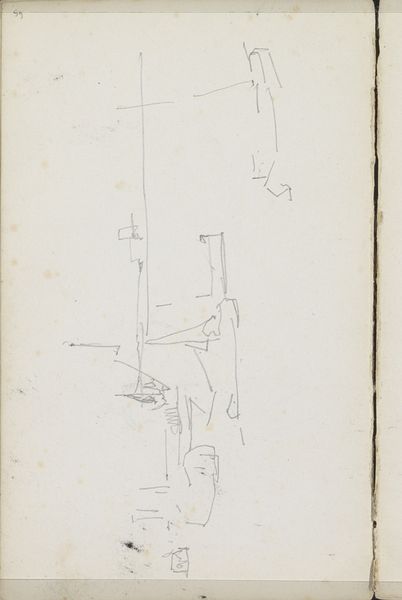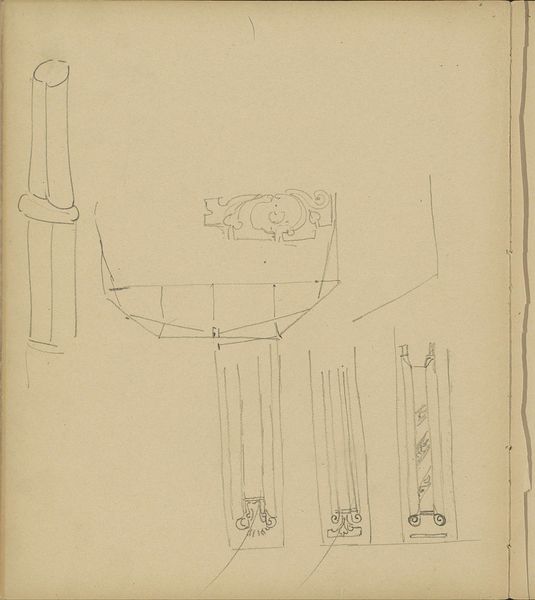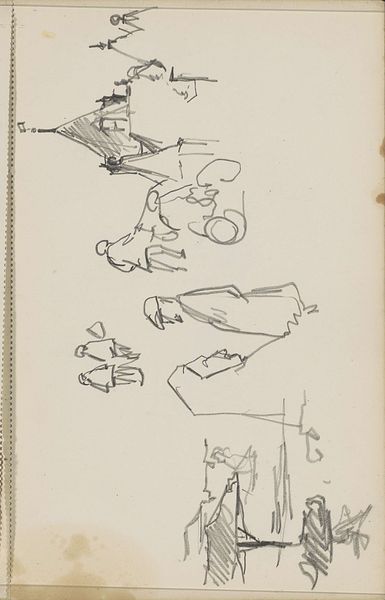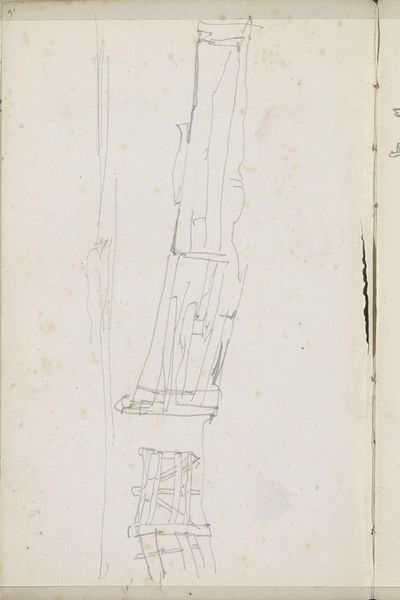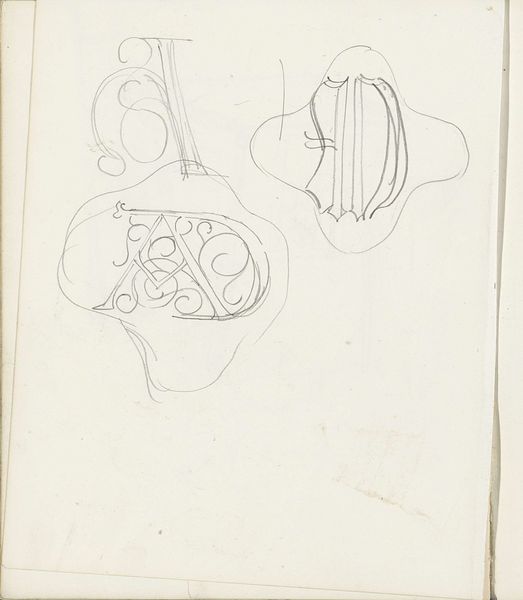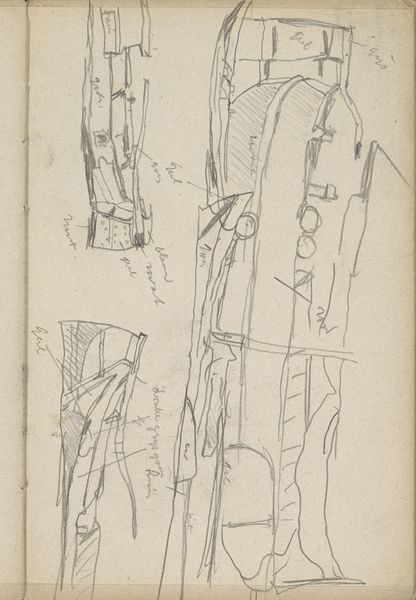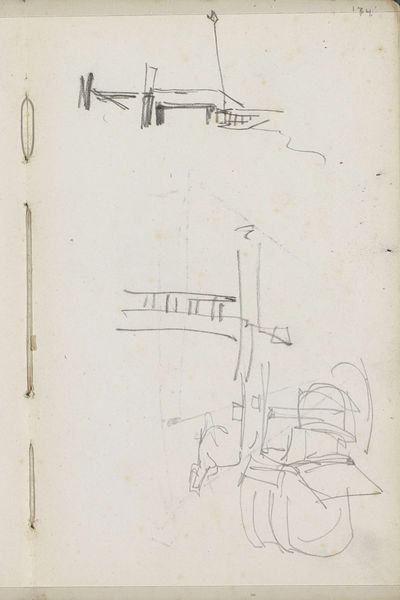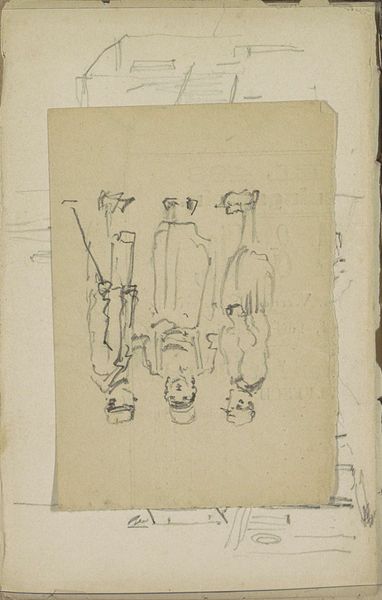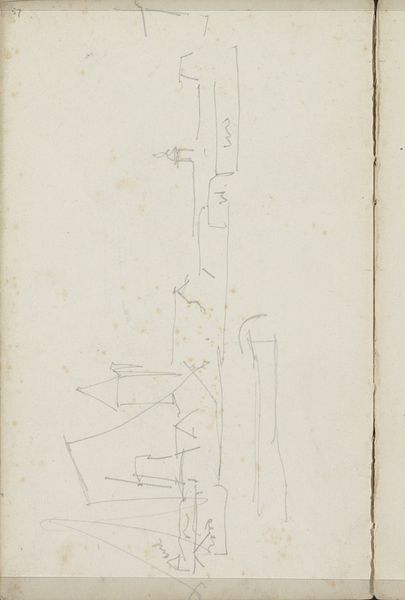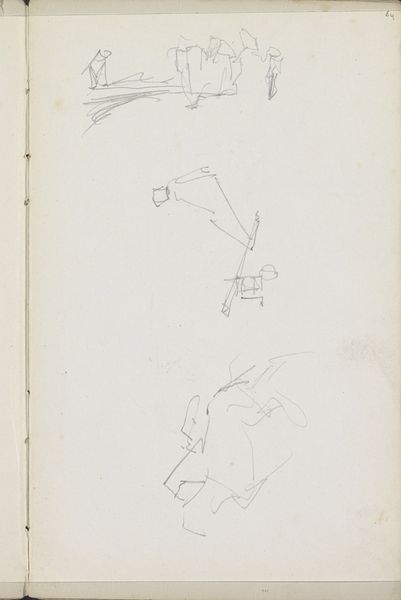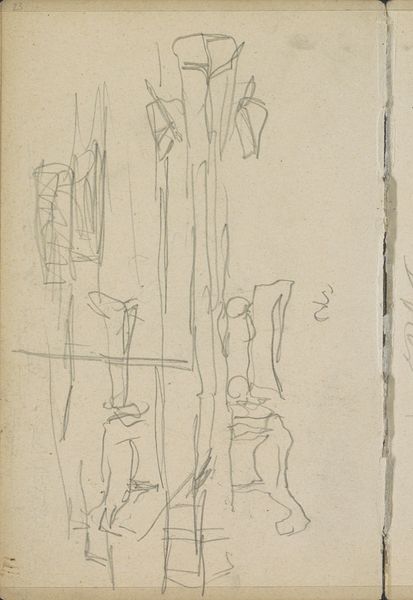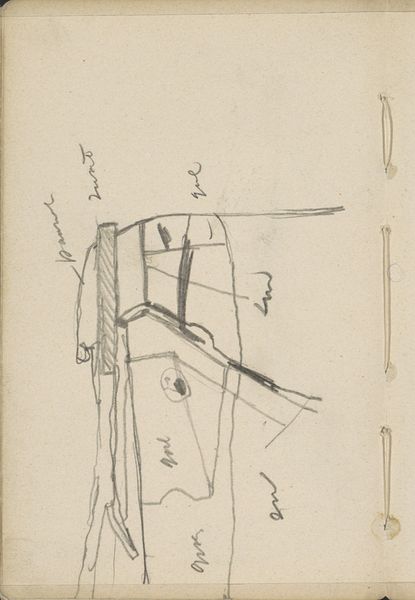
drawing, paper, pencil
#
drawing
#
aged paper
#
toned paper
#
light pencil work
#
sketch book
#
hand drawn type
#
landscape
#
figuration
#
paper
#
personal sketchbook
#
ink drawing experimentation
#
sketch
#
pen-ink sketch
#
pencil
#
sketchbook drawing
#
academic-art
#
sketchbook art
Copyright: Rijks Museum: Open Domain
Editor: This is Antoon Derkinderen’s “Christus aan het kruis,” a pencil drawing on paper from between 1889 and 1894. It’s fascinating, almost a study in different crucifixes, a figure repeated several times in rough sketches. What do you see in this piece, especially given its historical context? Curator: I see Derkinderen wrestling with the iconography of the crucifixion. It’s not just a religious symbol, but one imbued with power, suffering, and sacrifice – concepts that resonate across various socio-political struggles. He’s experimenting with different compositions, different ways of portraying this potent symbol. Consider the late 19th century - a time of intense social upheaval, class struggles, and burgeoning socialist movements. How might these sketches engage with those themes? Editor: It does feel very raw and unfinished. It's a personal sketchbook page rather than a polished artwork. Curator: Precisely. Think about the subversive potential. Is it a symbol of hope or oppression? Is Derkinderen challenging or reinforcing the institution that uses this image? We need to consider the artist’s potential political leanings and the cultural forces at play in the Netherlands at the time. What message do you think these rapidly sketched versions are communicating? Editor: I hadn't thought about it that way. It's interesting to consider that an image so traditionally associated with religion could also be interpreted through the lens of social activism. Perhaps he’s deconstructing the established narratives. Curator: Exactly! By examining these sketches, we can see the artist questioning the dominant narratives and possibly exploring alternative interpretations of power, faith, and resistance. We must acknowledge art’s place within sociopolitical movements of the time. Editor: That’s a great way to frame it. I’ll definitely look at this, and other works, with a fresh perspective going forward. Curator: And I'll consider more closely Derkinderen’s influences from different socioeconomic viewpoints when examining pieces such as this again.
Comments
No comments
Be the first to comment and join the conversation on the ultimate creative platform.
